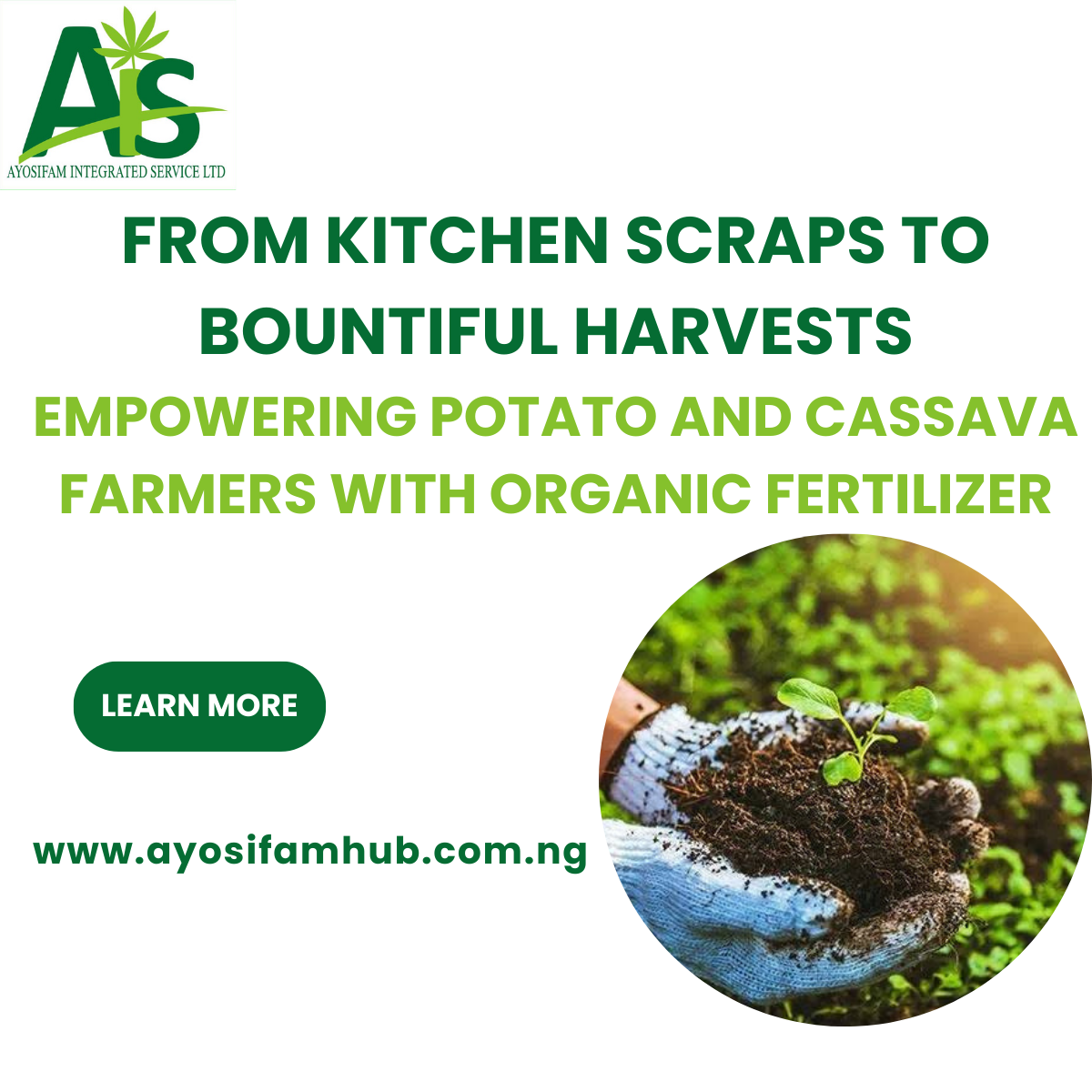On the AyosifamHub blog, our mission is to provide practical solutions for farmers. The pursuit of higher yields and lower operational costs is a constant endeavor. Amidst rising costs of synthetic fertilizers, a sustainable and cost-effective solution lies right in our kitchens: organic fertilizer made from kitchen waste. This article explores how embracing this simple practice can significantly benefit your farm, enhancing both your harvest and your bottom line.
The Power of Self-Made Organic Fertilizer: A Win-Win for Farmers
Harnessing the potential of kitchen waste to create organic fertilizer offers a multitude of advantages for potato and cassava farmers:
Advantages:
-
Reduced Costs: The most immediate benefit is the significant reduction in the need to purchase expensive synthetic fertilizers. By utilizing readily available kitchen scraps, you can drastically lower your input costs.
-
Improved Soil Health: Organic fertilizer enriches the soil with essential nutrients, improves its structure, water retention capacity, and aeration. This creates a healthier environment for your potato and cassava roots to thrive.
-
Increased Yields: Healthy soil leads to stronger, more resilient plants that are better able to absorb nutrients and water, ultimately resulting in higher and more consistent yields.
-
Enhanced Crop Quality: Organic fertilizers promote a balanced nutrient supply, leading to healthier and more nutritious potatoes and cassava.
-
Environmental Sustainability: By composting kitchen waste, you are diverting organic matter from landfills, reducing greenhouse gas emissions and contributing to a cleaner environment.
-
Reduced Reliance on External Inputs: Making your own fertilizer makes your farm more self-sufficient and less vulnerable to fluctuations in the prices and availability of synthetic fertilizers.
Importance:
Self-made organic fertilizer offers a vital pathway to sustainable and profitable farming. It empowers farmers to take control of their soil health and nutrient management, leading to greater food security and economic resilience.
Step-by-Step Guide to Making Organic Fertilizer from Kitchen Waste
Turning your kitchen scraps into valuable fertilizer is a straightforward process. Here’s a simple guide to get you started:
Step 1: Collect Your Kitchen Waste
Gather a variety of “green” materials such as:
-
Vegetable and fruit peels and scraps
-
Coffee grounds and tea bags (without the plastic or metal staples)
-
Eggshells (crushed)
-
Cooked rice and pasta (without meat or dairy sauces)
Avoid these materials:
-
Meat, fish, and dairy products (can attract pests and create foul odors)
-
Oily or greasy foods
-
Diseased plants
-
Treated wood or charcoal ash
Step 2: Choose Your Composting Method
You can choose a method that suits your available space and resources:
-
Compost Pile: Find a designated area in your farm or backyard to create a pile. Alternate layers of your “green” kitchen waste with “brown” materials like dry leaves, straw, or shredded cardboard.
-
Compost Bin: You can use a plastic bin with ventilation holes or build a simple wooden structure to contain your compost. Layer the “green” and “brown” materials inside the bin.
-
Simple Hole Composting: Dig a pit in your garden and bury your kitchen waste directly. This is a simple method for smaller quantities.
Step 3: Layer and Mix Your Materials
For compost piles and bins, aim for a balance of “green” and “brown” materials. A good ratio is often around 2 parts “green” to 1 part “brown”. This provides the necessary carbon and nitrogen for decomposition. Chop or break down larger pieces of kitchen waste to speed up the process.
Step 4: Maintain Moisture
The compost needs to be consistently moist, like a wrung-out sponge. If it’s too dry, the decomposition process will slow down. If it’s too wet, it can become anaerobic and smelly. Add water if needed, especially during dry periods.
Step 5: Aerate Your Compost
Turning or mixing your compost pile or bin regularly (every few weeks) helps to aerate it, providing oxygen for the microbes that break down the organic matter. This speeds up the composting process and reduces odors.
Step 6: Be Patient
The time it takes for your kitchen waste to turn into usable compost depends on factors like temperature, moisture, and aeration. It can take anywhere from a few months to a year. The compost is ready when it is dark brown or black, crumbly, and has an earthy smell.
Step 7: Using Your Organic Fertilizer
Once your compost is ready, you can use it in several ways to benefit your potato and cassava crops:
-
Soil Amendment: Mix the compost into your garden beds before planting to improve soil structure and fertility.
-
Side Dressing: Apply compost around the base of your growing potato and cassava plants as a source of slow-release nutrients.
-
Mulch: Use a layer of compost around your plants to help retain moisture and suppress weeds.
-
Compost Tea: Soak a handful of mature compost in a bucket of water for a day or two. Use the strained liquid to water your plants for a nutrient boost.
Empowering Farmers for a Sustainable Future
Adopting the practice of making organic fertilizer from kitchen waste is a practical and empowering step for potato and cassava farmers. By turning a household by-product into a valuable agricultural input, you can reduce costs, improve your soil health, increase your yields, and contribute to a more sustainable and resilient farming system. Start small, experiment, and witness the transformative power of self-made organic fertilizer on your farm. AyosifamHub is here to support your journey towards a more prosperous and sustainable agricultural future.




